Zeus and His Dysfunctional Family
6 Hera
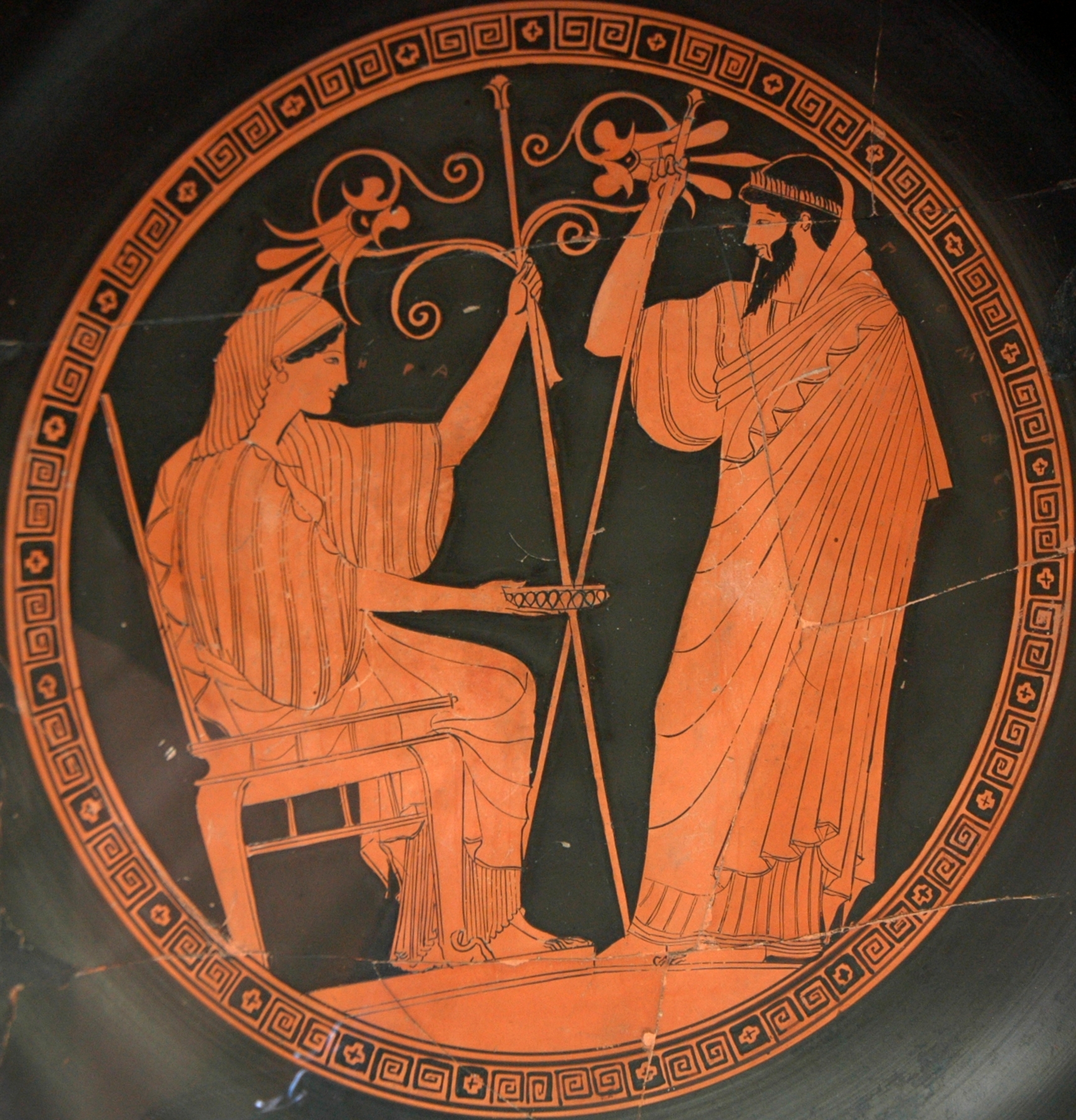
Origins
Hera is one of the six children of Cronus and Rhea. Along with four of her siblings, she suffered the fate of being swallowed by her father Cronus. After being freed by Zeus and Rhea, she was allotted control over the sphere of marriage and its related concerns: aspects of household management and childbearing. She is the third and final wife of Zeus and together they produce Ares, Hebe (goddess of youth), and Eileithyia (goddess of childbirth). In response to Zeus birthing Athena from his own head, Hera produces Hephaestus on her own (parthenogenesis). According to the Homeric Hymn to Apollo (see chapter 12) she, not Gaia, is the mother of Typhoeus (her way of getting back at Zeus for the birth of Athena).
Although Hera is primarily remembered now as the unpleasant, jealous sister-wife of Zeus, in ancient Greece she had a strong religious presence. There were prominent and much-visited sanctuaries of Hera all over the ancient Greek world. The most famous of these was near Argos.
Indeed it is possible that during the period of pan-Hellenization in the 8th/7th centuries BCE, an earlier version of Hera as a goddess of married, child-bearing women was syncretized with Hera, the sister and wife of Zeus. Thus, the Hera that we see in the literary texts does not always seem to sit comfortably with the Hera that appears on the ancient artwork. She was certainly a beloved and much-worshipped goddess in ancient Greece, despite the stories of her impotent rages at Zeus’ many infidelities.
Hera in Action
Sections & Primary Sources
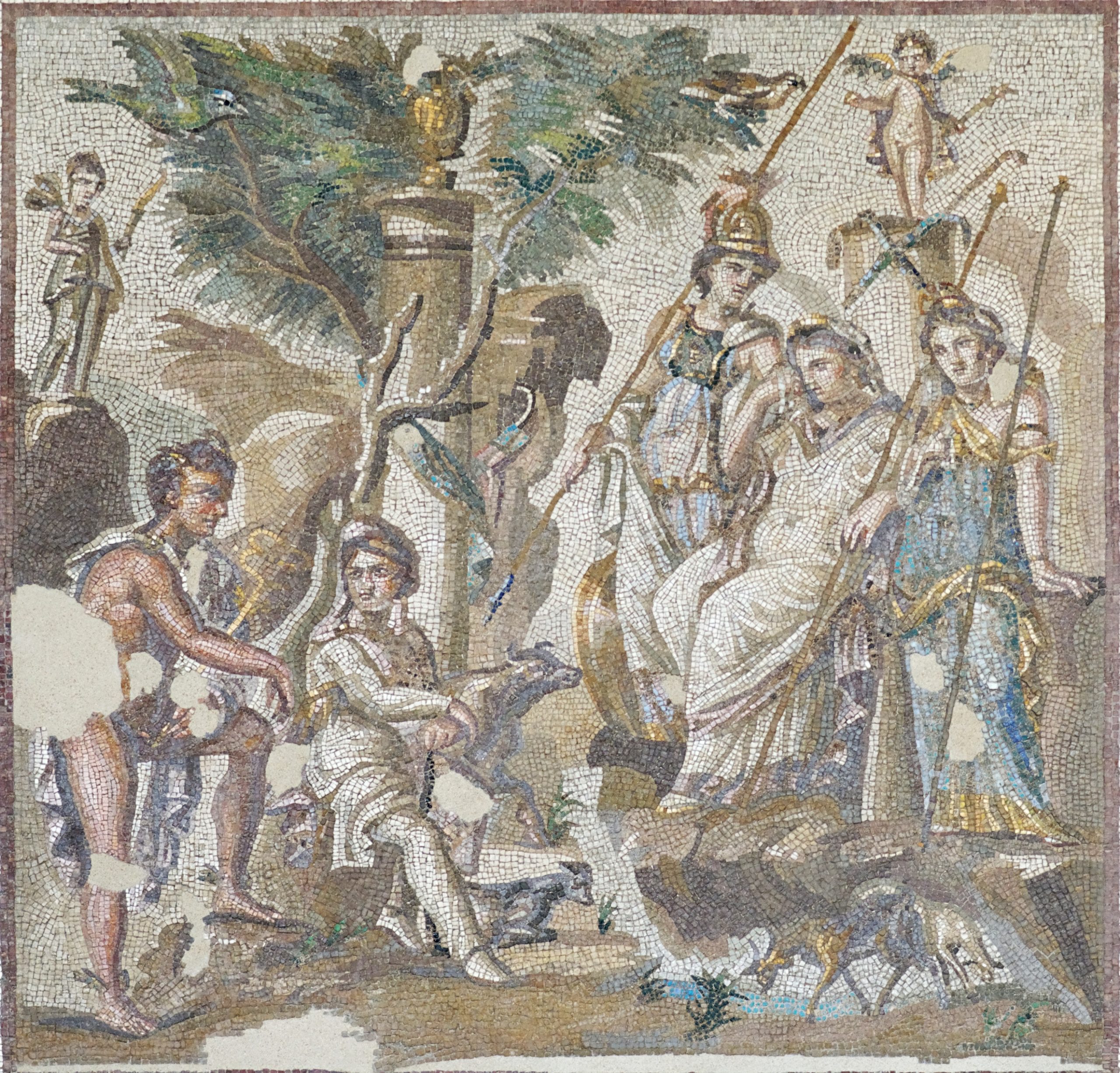
Hera as Zeus’ Counterpart
Hera features in the stories of other gods and heroes more than in her own stories. But we should not imagine, because of her absence in the literary sources, that she was not an important figure to the ancient Greeks. According to some of our evidence she was worshiped on par with Zeus, as his feminine counterpart and consort.
Homeric Hymn 12, “To Hera” (trans. H. G. Evelyn-White, adapted by T. Mulder)
Greek hymn, 7th-4th BCE
I sing of golden-throned Hera whom Rhea bore. She is queen of the Immortals, surpassing all in beauty: she is the sister and wife of loud-thundering Zeus,–the glorious one whom all the blessed throughout high Olympos revere and honour as much as Zeus who delights in thunder
Taken from: https://www.perseus.tufts.edu/hopper/text?doc=Perseus:text:1999.01.0138:hymn=12
Hera at Argos
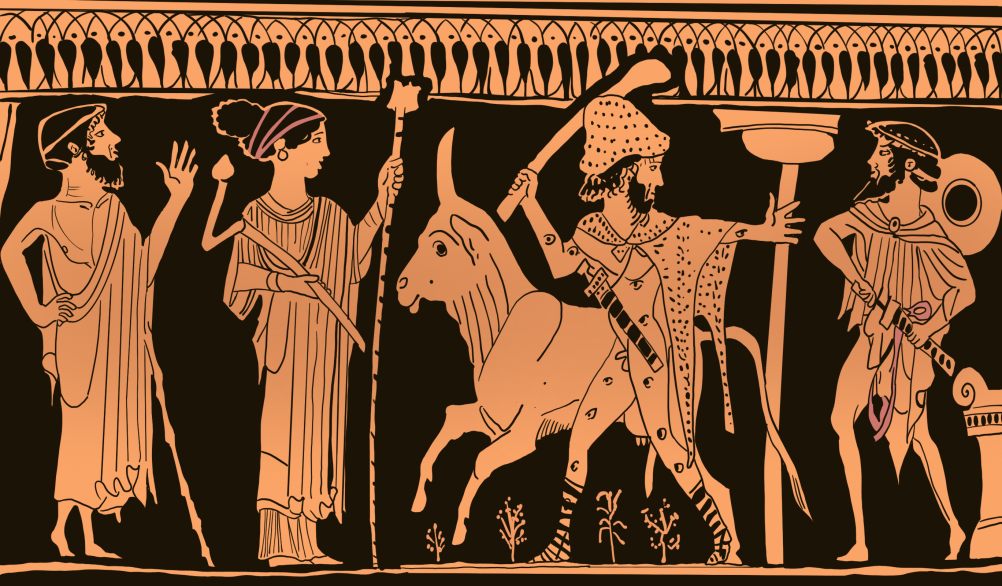
Pseudo-Apollodorus, Bibliotheca, Book 2 (trans. J. G. Frazer, adapted by P. Rogak)
Greek mythography, 2nd century CE
[2.1.2] Ecbasus had a son Agenor, and Agenor had a son Argus, the one who is called the All-seeing. He had eyes in the whole of his body, and being exceedingly strong he killed the bull that ravaged Arcadia and dressed himself in its hide; and when a satyr wronged the Arcadians and robbed them of their cattle, Argus withstood and killed him. It is said, too, that Echidna, daughter of Tartarus and Earth, who used to carry off passers-by, was caught asleep and slain by Argus. He also avenged the murder of Apis by putting the guilty to death.
[2.1.3] Argus and Ismene, daughter of Asopus, had a son Iasus, who is said to have been the father of Io. But the writer Castor and many of the tragedians allege that Io was a daughter of Inachus; and Hesiod and Acusilaus say that she was a daughter of Piren. Zeus seduced her while she held the priesthood of Hera, but being detected by Hera, he turned Io into a white cow with one touch and swore that he had not had intercourse with her; for this reason Hesiod remarks that lovers’ oaths do not draw down the anger of the gods. But Hera requested the cow from Zeus for herself and set Argus the All-seeing to guard it. Pherecydes says that this Argus was a son of Arestor, but Asclepiades says that he was a son of Inachus, and Cercops says that he was a son of Argus and Ismene, daughter of Asopus; but Acusilaus says that he was earth-born. He tethered her to the olive tree which was in the grove of the Mycenaeans [ people of Mycenae ]. But Zeus ordered Hermes to steal the cow, and as Hermes could not do it secretly because Hierax had blabbed, he killed Argus by the cast of a stone; for this reason he was called Argeiphontes. Hera next sent a gadfly to irritate the cow, and the animal came first to what is called after her the Ionian gulf. Then she journeyed through Illyria and having traversed Mount Haemus she crossed what was then called the Thracian Straits but is now called after her the Bosphorus.[1] And having gone away to Scythia and the Cimmerian land she wandered over great tracts of land and swam wide stretches of sea both in Europe and Asia until at last she came to Egypt, where she recovered her original form and gave birth to a son Epaphus beside the river Nile. Hera asked the Curetes to take him away, and they took him away. When Zeus learned of it, he slew the Curetes; but Io set out in search of the child. She roamed all over Syria, because there it was revealed to her that the wife of the king of Byblus was nursing her son; and having found Epaphus she came to Egypt and was married to Telegonus, who then reigned over the Egyptians. And she set up an image of Demeter, whom the Egyptians called Isis, and Io likewise they called by the name of Isis.[2]
Taken from: https://www.theoi.com/Text/Apollodorus2.html#1
Ovid, Metamorphoses, Book 1 (trans. A. S. Kline, adapted by P. Rogak)
Latin epic, 1st century BCE-1st century CE
[622-641] Though her rival [ Io ] was given up, the goddess [Hera] did not abandon her fears at once, cautious of Jupiter and afraid of his trickery, until she had given Io into Argus’ keeping, that son of Arestor. Argus had a hundred eyes around his head, that took their rest two at a time in succession while the others kept watch and stayed on guard. Wherever he stood he was looking at Io, and had Io in front of his eyes when his back was turned. He let her graze in the light, but when the sun sank below the earth, he penned her, and fastened a rope around her innocent neck. She grazed on the leaves of trees and bitter herbs. She often lay on the bare ground, and the poor thing drank water from muddy streams. When she wished to stretch her arms out to Argus in supplication, she had no arms to stretch. Trying to complain, a lowing came from her mouth, and she was alarmed and frightened by the sound of her own voice. When she came to Inachus’ riverbanks where she often used to play and saw her gaping mouth and her new horns in the water, she grew frightened and fled, terrified of herself.
[642-667] The naiads did not know her: Inachus himself did not know her, but she followed her father, followed her sisters, allowing herself to be petted, and offering herself to be admired. Old Inachus pulled some grasses and held them out to her: she licked her father’s hand and kissed his palm, could not hold back her tears, and if only words could have come she would have begged for help, telling her name and her distress. With letters drawn in the dust with her hoof, instead of words, she traced the sad story of her changed form. ‘Pity me!’ said her father Inachus, clinging to the groaning heifer’s horns and snow-white neck, ‘Pity me!’ he sighed; ‘Are you really my daughter I searched the wide world for? There was less sadness with you lost than found! Without speech, you do not answer in words to mine, only heave deep sighs from your breast, and all you can do is low in reply to me. Unknowingly I was arranging marriage and a marriage-bed for you, hoping for a son-in-law first and then grandchildren. Now you must find a mate from the herd, and from the herd get you a son. I am not allowed by dying to end such sorrow; it is hard to be a god, the door of death closed to me, my grief goes on immortal for ever.’ As he mourned, Argus with his star-like eyes drove her to distant pastures, dragging her out of her father’s arms. There, sitting at a distance he occupied a high peak of the mountain, where resting he could keep a watch on every side.
[668-688] Now the king of the gods [ Jupiter ] can no longer stand Phoronis’ [ Io‘s ] great sufferings, and he calls his son, born of the shining Pleiad [ Maia ], and orders him to kill Argus. Mercury, quickly puts on his winged sandals, takes his sleep-inducing wand in his divine hand, and sets his cap on his head. Dressed like this the son of Jupiter touches down on the earth from his father’s stronghold. There, he takes off his cap, and removes his wings, only keeping his wand. Taking this, disguised as a shepherd, he drives she-goats, stolen on the way, through solitary lanes, and plays his reed pipe as he goes. Juno’s guard is captivated by this new sound. ‘You there, whoever you are,’ Argus calls ‘you could sit here beside me on this rock; there’s no better grass elsewhere for your flock, and you can see that the shade is fine for shepherds.’
The descendant of Atlas sits down, and passes the day in conversation, talking of many things, and playing on his reed pipe, trying to conquer those watching eyes. Argus however fights to overcome gentle sleep, and though he allows some of his eyes to close, the rest stay vigilant. He even asks, since the reed pipe has only just been invented, how it was invented.
[689-721] So the god explained ‘On Arcadia’s cold mountain slopes among the wood nymphs, the hamadryads, of Mount Nonacris, one was the most celebrated: the nymphs called her Syrinx. She had often escaped from the satyrs chasing her, and from others of the demi-gods that live in shadowy woods and fertile fields. But she followed the worship of the Ortygian goddess [ Diana ] in staying virgin. With her clothes styled like Diana‘s, she deceives the eye, and could be mistaken for Leto’s daughter, except that her bow is of horn, and the other’s is of gold. Even so she is deceptive. Pan, whose head is crowned with a wreath of sharp pine shoots, saw her, coming from Mount Lycaeus, and spoke to her.’ Now Mercury still had to relate what Pan said, and how the nymph, hating his advances, ran through the wilds until she came to the calm waters of sandy Ladon; and how when the river stopped her flight she begged her sisters of the stream to change her; and how Pan, when he thought he now had Syrinx, found that instead of the nymph’s body he only held reeds from the marsh; and, while he sighed there, the wind in the reeds, moving, gave out a clear, plaintive sound. Charmed by this new art and its sweet tones the god said ‘This way of communing with you is still left to me.’ So unequal lengths of reed, joined together with wax, preserved the girl’s name.
About to tell all this, Cyllenian Mercury saw that every eye had succumbed and their light was lost in sleep. Quickly he stops speaking and deepens their rest, caressing those drowsy eyes with touches of his magic wand. Then straightaway he strikes the nodding head, where it joins the neck, with his curved sword, and sends it bloody down the rocks, staining the steep cliff. Argus, you are overthrown, the light of your many eyes is extinguished, and one dark sleeps under so many eyelids.
[722] Saturnia took his eyes and set them into the feathers of her own bird, and filled the tail with star-like jewels. Immediately she blazed with anger, and did not hold back from its consequences.
Translated by A. S. Kline © Copyright 2000 All Rights Reserved
These stories aside, the reality of Hera’s worship at Argos may have been quite different for the ancient Greeks. This gold ring, found among over six-hundred rings dedicated at the sanctuary to Hera in Argos, is inscribed with the Greek words, “Harriknidas dedicated [this] to the goddess white-armed Hera.” Almost all of the other rings dedicated at the sanctuary were made of bronze and un-inscribed. These ring dedications likely pertained to requests related to marriage: hopes for a future spouse, requests for conjugal harmony and/or fidelity, attempts to repair damaged marital bonds.
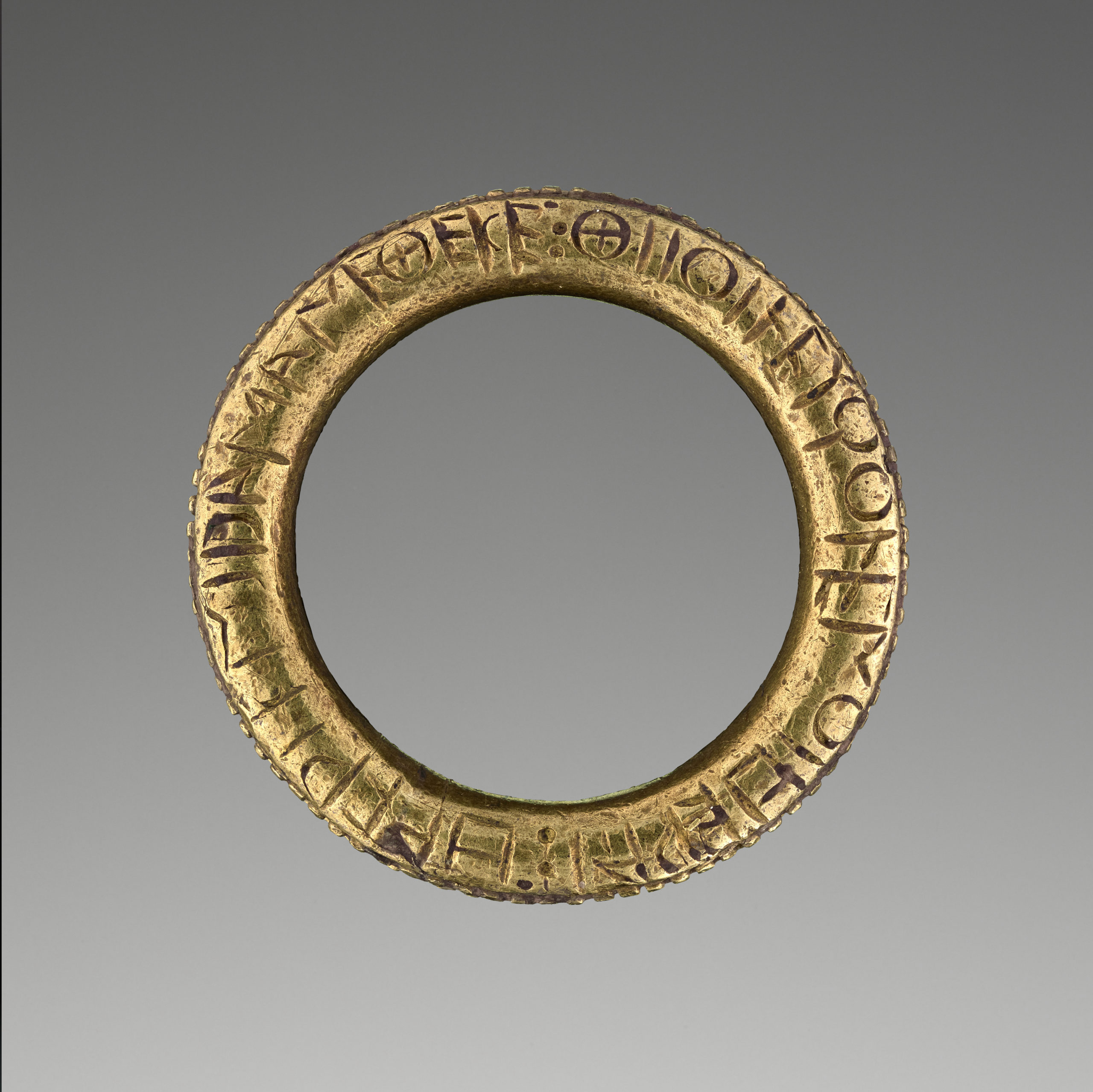
Art and Symbolism
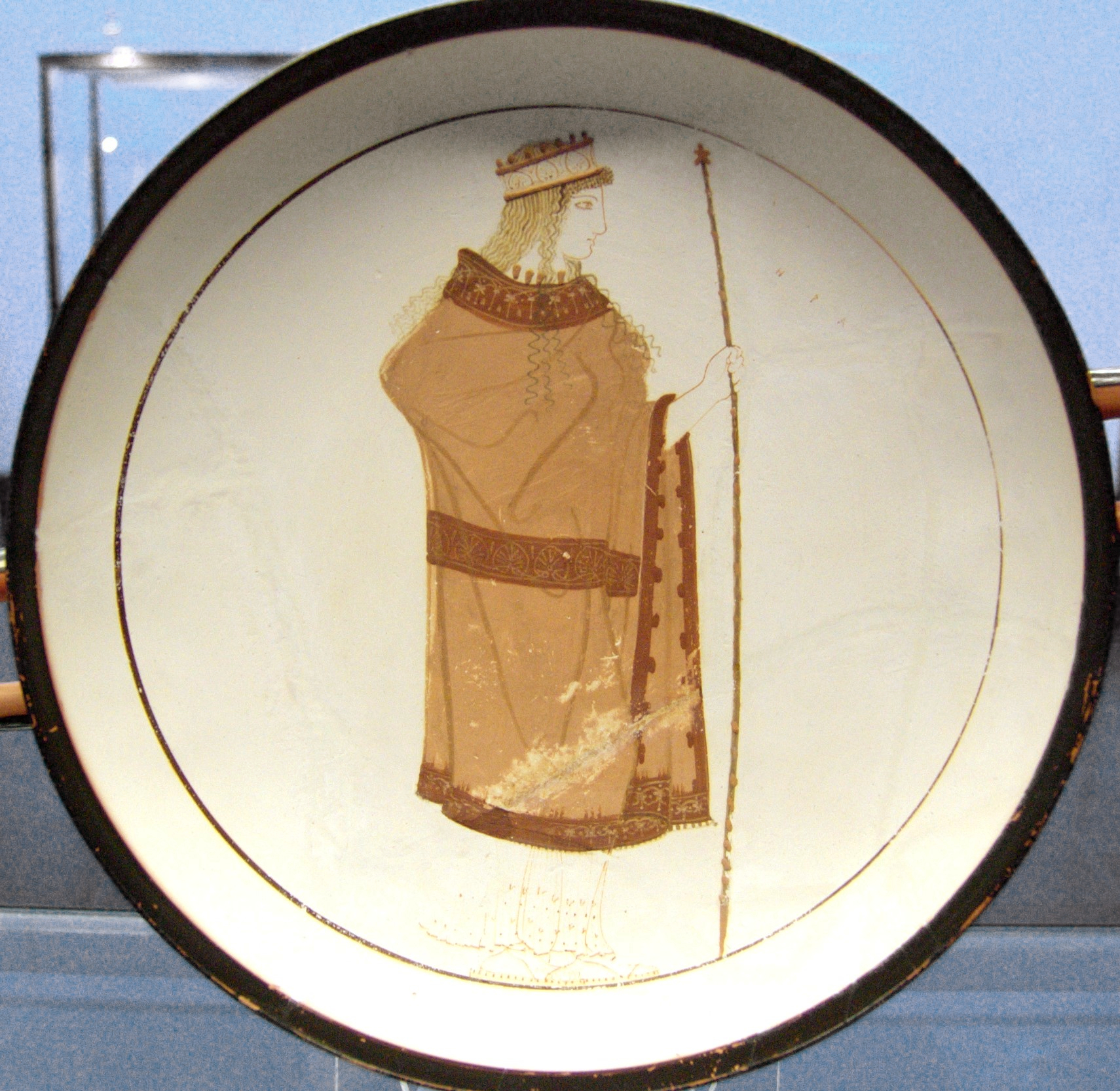
In Greek art, Hera was usually represented as a beautiful woman wearing an elaborate dress, often covered with a cloak and veil. Her most recognizable attributes in art were the diadem and the sceptre. The goddess is often represented enthroned or standing close to Zeus, to highlight her position as queen of the gods.
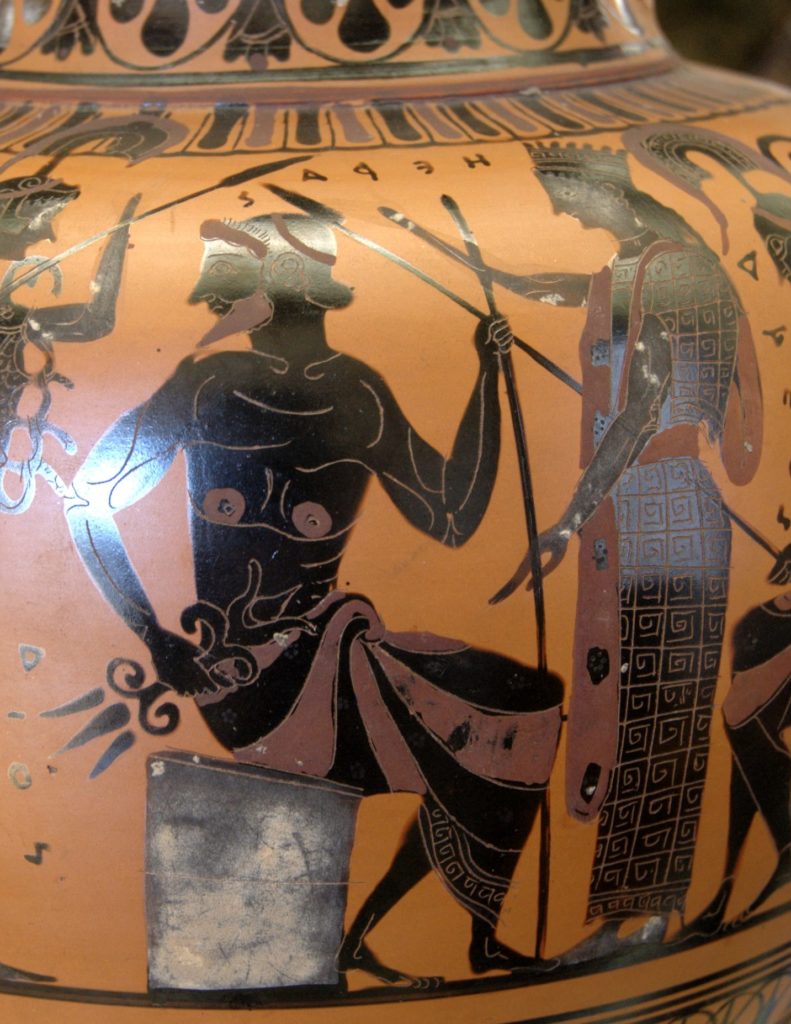
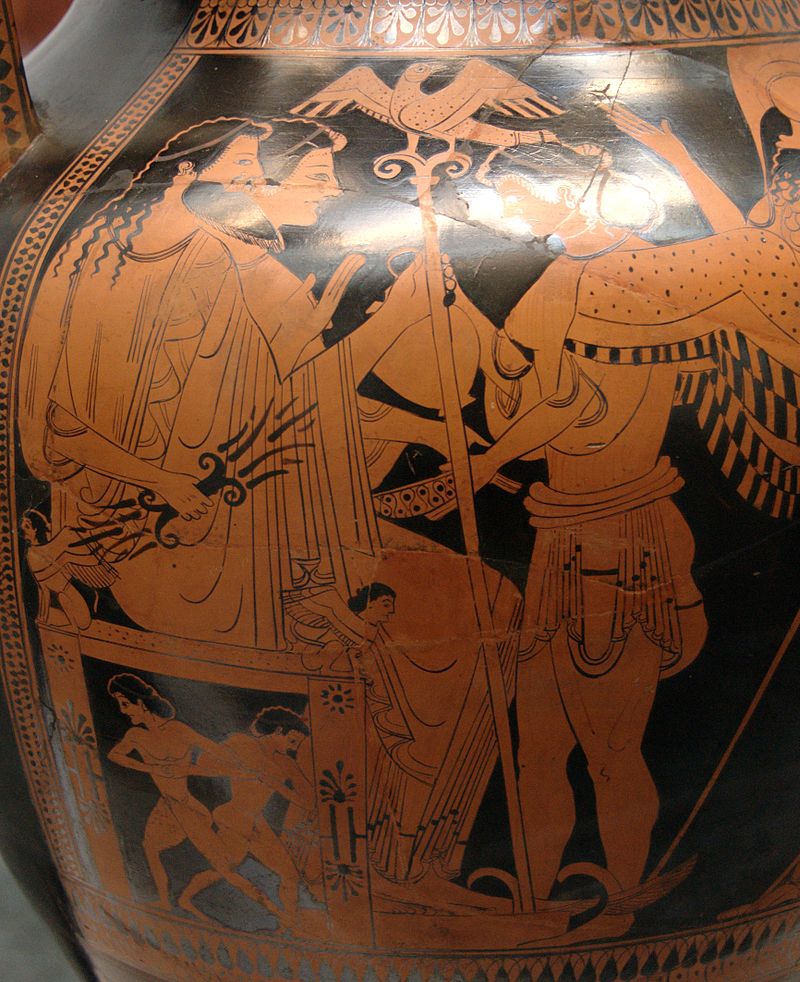
Another common scene involving Hera in Greek art was the depiction of her marriage to Zeus (‘hieros gamos’).
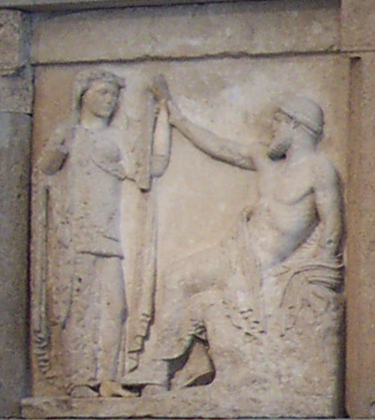
According to literary sources, her sacred bird was the cuckoo, but this animal is seldom represented in art. From the late 4th century BCE onwards the peacock also became one of Hera’s sacred animals, but it was very rarely seen in artistic depictions until much later in time.
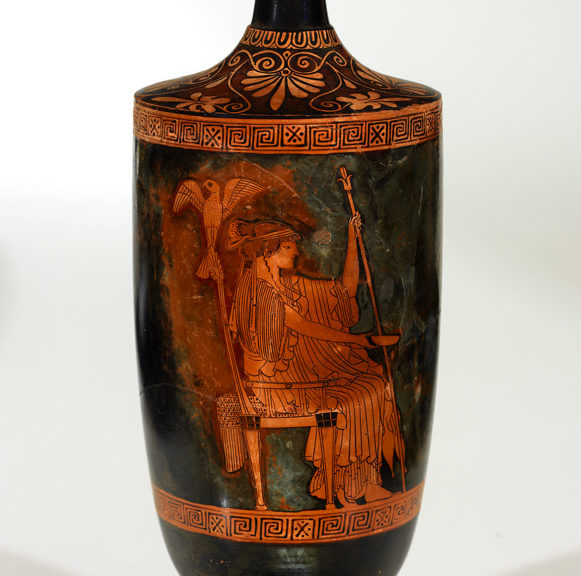
Juno
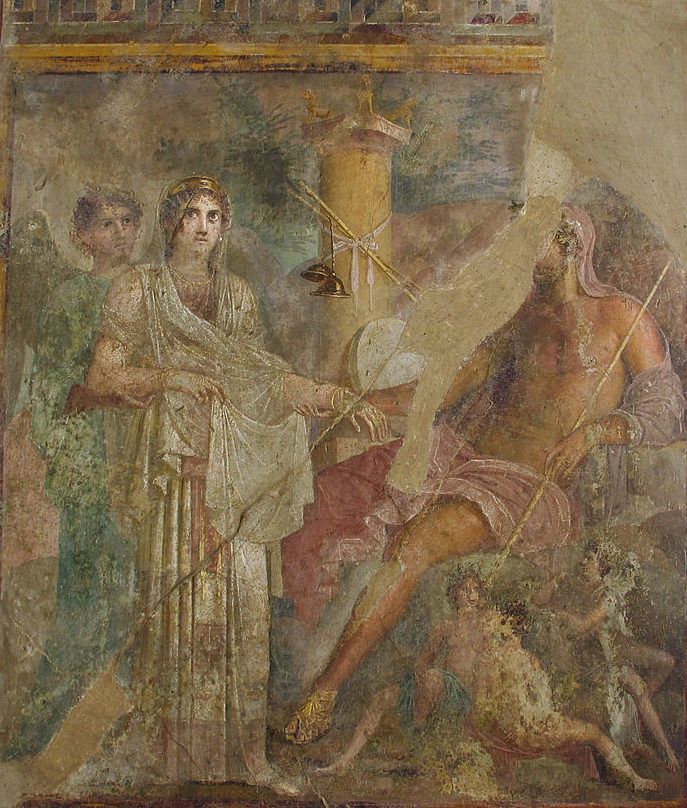
Much like the Roman counterpart of her husband, Zeus/Jupiter, the iconography of Juno remained essentially the same as that of Hera. She kept being represented as a mature woman, usually enthroned, wearing jewels and carrying a sceptre. She was also sometimes portrayed as part of the Capitoline Triad alongside Jupiter and Minerva.
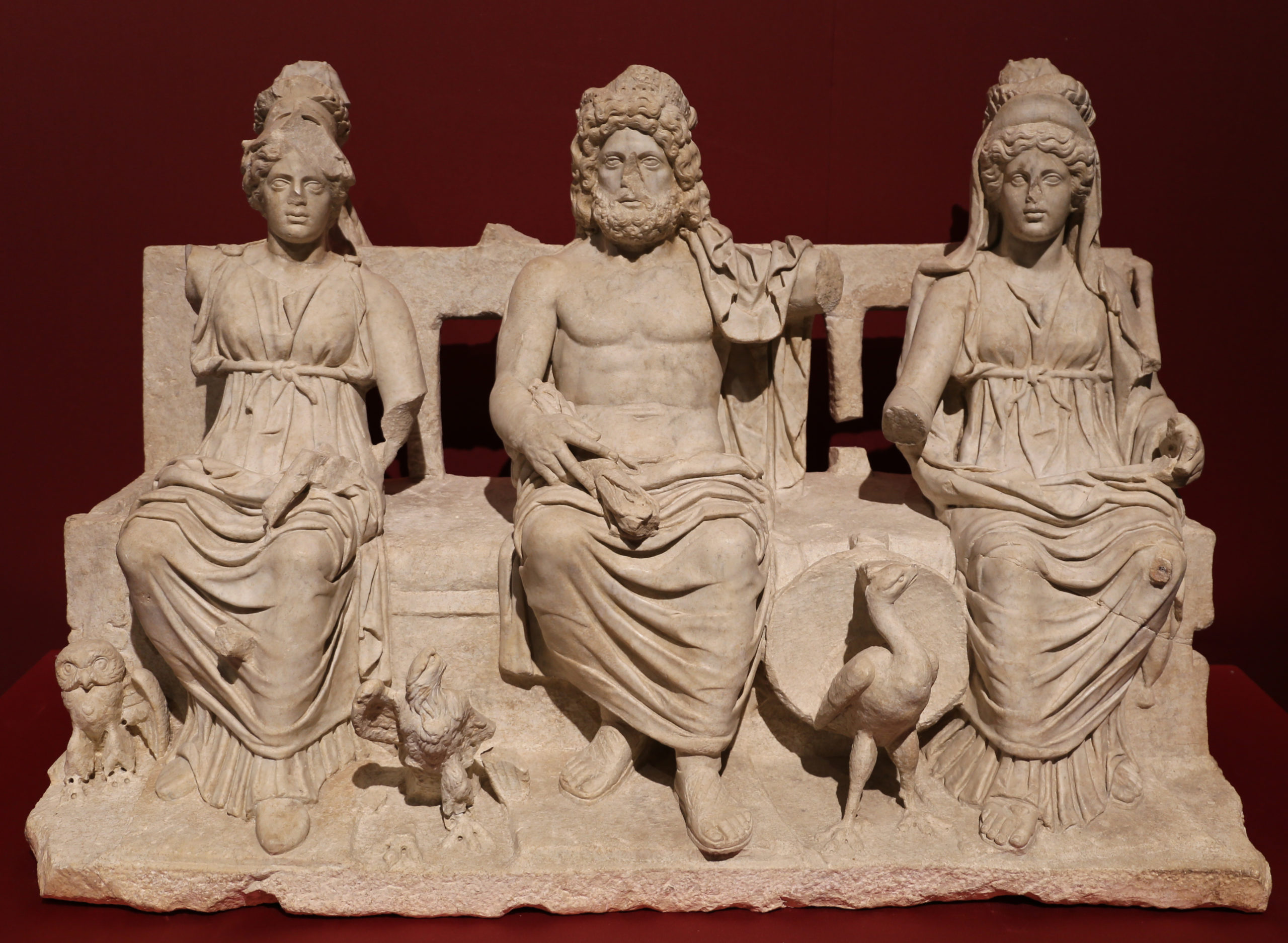
Roman artists had a fascination with the goddess’ sacred bird, the peacock, as it was an exotic import with multicolored feathers. However, representations of Juno very rarely showed her in the company of this animal.
Media Attributions and Footnotes
Media Attributions
- Hera Prometheus Cdm Paris 542 is licensed under a Public Domain license
- Judgement Paris Antioch Louvre_Ma3443 is licensed under a Public Domain license
- Hera, Io, and Argus
- Ring with Greek Inscription to Hera © J. Paul Getty Museum is licensed under a Public Domain license
- Hera_Staatliche_Antikensammlungen_2685_full © Bibi St-Pol is licensed under a Public Domain license
- Theoi Cdm Paris 229 © Bibi St-Pol is licensed under a Public Domain license
- God council in Olympus: Zeus and Hera throning, Iris serving them © Bibi St-Pol is licensed under a Public Domain license
- Hieros gamos Selinonte is licensed under a Public Domain license
- Oil Flask (Lekythos), ca. 500BCE-475BCE © Museum Appropriation Fund is licensed under a Public Domain license
- Hera vestita da sposa, spinta da iride verso zeus © Sailko is licensed under a CC BY-SA (Attribution ShareAlike) license
- Arte romana, triade capitolina © Sailko is licensed under a CC BY-SA (Attribution ShareAlike) license
Asexual reproduction, or the act of reproducing on one's own, without a partner.
Greek: Rhea or Cybele
Roman: Magna Mater, Cybele, or Ops
Nature goddesses of various origins who were often equated or conflated. Generally refers to the Titan wife and sister of Cronus, and mother of many of the gods including Zeus and Hera. Her worship often included loud music and wild processions, and she was often associated with Mount Ida.
Featured in chapter 15 (as Cybele). Also appears in chapter 1 (as Rhea).
Greek: Zeus
Roman: Jupiter or Jove
God of the sky, ruler of the Olympian gods.
See chapter 5.
A mountain in Greece, and the mythical home of the gods on this mountain.
A many-eyed giant known for serving Hera in her plot against Io and Zeus.
Featured in chapter 6 and chapter 16.
Half-goat, half-human minor woodland deities associated with lust and revelry.
A dracaena, and the mother of many famous monsters including Cerberus, the Hydra, and the Nemean Lion.
Featured in chapter 1.
The deep abyss of the Underworld where the Titans were imprisoned, or the primordial deity personifying the abyss.
Greek: Gaia
Roman: Terra
Goddess of the earth.
Featured in chapter 1.
May refer to four different rivers of the same name, or to their personifications as a river god.
A priestess of Hera at Argos. Daughter of Inachus, wife of Telegonus, and mother of Epaphus. Known for being transformed into a cow by Zeus in an attempt to protect her from Hera's anger.
Featured in chapter 6 and chapter 14.
The first king of Argos and personification of the river Inachus. Father of Io and ancestor of many important figures including Perseus, Cadmus, and Europa.
Featured in chapter 6.
A city in the Argolis. Associated with the line of Perseus, Tantalus, and the house of Atreus.
See chapter 39.
Greek: Hermes
Roman: Mercury
God of travelers and trickery.
See chapter 16.
Epithet for Hermes (see chapter 16), refers to his slaying of Argus Panoptes.
A king of Egypt, son of Zeus and Io, and ancestor of many important figures of Argos including Danaus and Perseus.
Called Curetes or Corybantes.
Worshippers of the goddess Cybele, known for playing loud music and associated with Mount Ida.
Appear in chapter 15.
Greek: Demeter
Roman: Ceres
Goddess of agriculture.
See chapter 10.
A myth that describes the cause or origin of a person, place, thing, natural phenomenon, ritual, or custom.
Nature spirits or nymphs of freshwater lakes, streams, and pools.
A group of 7 nymphs associated with stars and the night sky. Daughters of Atlas.
A nymph and one of the Pleiades, and mother of Hermes.
Featured in chapter 16.
A Titan, and father of the Pleiades and Hesperides. Known for being punished to hold up the heavens for eternity.
Featured in chapter 17. Also appears in chapter 21.
Minor nature deities.
Greek: Artemis
Roman: Diana
Maiden goddess of wilderness and the hunt, and twin sister of Apollo.
See chapter 13.
Greek: Leto
Roman: Latona
Titan mother of Artemis and Apollo.
Featured in chapter 12 and chapter 13.
God of shepherds, the wild, and wild music.
Latin epithet for Hera (see chapter 6).

